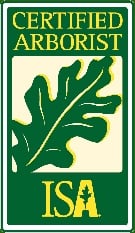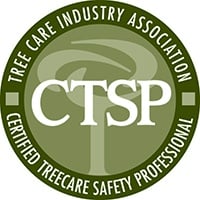Who doesn't love a tall, full pine tree? They provide shade, block wind, and increase the privacy of our properties. They also make a nice home for birds and other small animals and perfume the air with their wonderful scent.
If you love your pines, there's something you can do to keep them standing strong and tall: take measures to prevent a bark beetle infestation.
What are bark beetles?
Bark beetles are small insects that mostly attack stressed coniferous trees. Their coniferous trees of choice? Pine trees for the most part, although some may target spruce trees. Urban pines are especially vulnerable to attack since they often suffer from multiple stressors, including soil compaction, drought, and a lack of organic matter in the soil.
The three types of bark beetles we see in the Charlotte, NC area are Ips engraver beetles, southern pine beetles, and black turpentine beetles. Of those, it's the southern pine bark beetle that's the most worrisome.
Southern pine bark beetles are a pine tree's worst nightmare. These beetles create homes in the inner bark of pine trees and feed on the tissue there. While they move around the inner bark, they create tunnels called galleries to lay eggs. These tunnels can significantly disrupt a tree's ability to transport vital water and nutrients. And once the eggs hatch, the larvae continue to make a meal of the tree.
Southern pine beetles can also introduce blue-stain fungi into trees. These fungi plug up the tree's xylem tissue, which is responsible for moving water and nutrients from the roots to the rest of the tree. When this blockage gets bad enough, the tree will start to decline and may even die.
Ips engraver and black turpentine bark beetles also infest and damage pine trees in many of the same ways, but they're typically not as aggressive as southern pine beetles. That's good news because it means the infected tree may still be a good candidate for treatment.
Signs and symptoms
One of the first things that happens to pines when bark beetles move in is foliage discoloration. Your pine's needles will go from green to yellow-green to brown or orange.
Here are some other ways you'll be able to tell you have a bark beetle problem:
- As bark beetles bore into the trunk, the tree will try to defend itself by releasing resin. You'll see globs of that resin and boring dust (aka: pitch tubes) on the trunk.
- The beetles will also create dust as they bore into the tree. You'll notice a reddish-brown, sawdust-like substance at the base of your tree. You may also see tiny (1-2 mm), scattered holes on the tree's bark.
- As previously mentioned, bark beetles create galleries as they move within the tree. You'll find winding, S-shaped patterns in the inner bark that may be filled with boring dust and frass (bug excrement).
How to protect your pines
By the time you see the issues above, it may be too late to save your tree. The key here is prevention.
The best thing you can do to keep bark beetles away from your pines is to make sure they're healthy. Bark beetles go for stressed trees, so if your tree is struggling from the effects of drought or soil compaction, it's more susceptible.
Worried your soil is compacted? We can help with that.
If you want to do more to protect your pines from bark beetles, our bark beetle trunk injection service is for you. This insecticide injection will start working in 4-8 weeks and remain effective for 2 years. This time of year (October-November) is the perfect time to schedule the service. We can also complete bark beetle trunk injections in March and April.
If you're interested in bark beetle trunk injection services to protect your pine trees, request a consultation ASAP!









